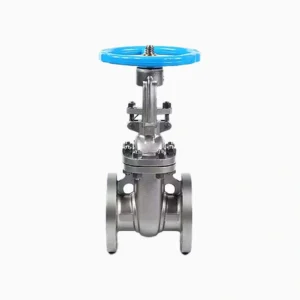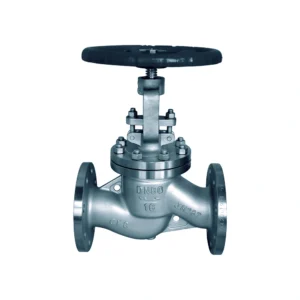Valves are essential components in a wide range of industrial applications, acting as control mechanisms for fluid flow in pipelines. Among the various types of valves, gate valves and globe valves are two of the most commonly used, each serving distinct purposes and operating in unique ways. Understanding their differences is crucial for engineers and operators when selecting the appropriate valve for specific applications. In this article, we will explore the key differences between gate valves and globe valves, their applications, advantages, and considerations for choosing the right valve for your needs.
What is a Gate Valve?
A gate valve is a type of valve that opens by lifting a barrier (gate) out of the fluid path. Its design allows for a straight-line flow of fluid with minimal obstruction, making it suitable for applications that require the complete flow of liquids or gases.
Structure and Operation The main components of a gate valve include the gate, seat, and stem. The gate is typically made of metal and can be designed in various shapes, such as wedge or parallel. The stem connects the gate to the actuator (like a handwheel) and is responsible for moving the gate up or down.
When the valve is closed, the gate fits tightly against the seat, creating a seal that prevents any fluid from passing through. The operation of a gate valve is generally straightforward: turning the handwheel raises or lowers the gate, allowing for quick opening or closing.
Applications Gate valves are widely used in various applications, including:
- Water Supply Systems: Providing shut-off capabilities for municipal water distribution.
- Oil and Gas Pipelines: Ensuring reliable flow control in the transportation of crude oil and natural gas.
- Sewage Treatment Plants: Allowing operators to isolate sections of the system for maintenance or emergencies.
Advantages One of the primary advantages of gate valves is their minimal pressure drop when fully opened. Since they are designed for full flow, they do not impede the fluid, resulting in efficient operation. Additionally, gate valves provide reliable shut-off capabilities, making them ideal for applications where isolation is required.
Disadvantages However, gate valves are not ideal for throttling applications, as their design does not facilitate precise flow control. They also take longer to open and close compared to other valve types, which can be a disadvantage in processes that require rapid adjustments. Moreover, gate valves can suffer from issues such as water hammer if not operated correctly.
What is a Globe Valve?
In contrast, a globe valve is designed specifically for regulating fluid flow. It consists of a spherical body with an internal baffle that directs the fluid through the valve. This design allows for greater control over the flow rate, making globe valves particularly valuable in various industrial settings.
Structure and Operation A globe valve’s internal components include the disk (or plug), seat, and stem. The disk moves vertically within the valve body to adjust the flow rate. Unlike gate valves, globe valves are engineered for throttling, allowing for gradual and precise adjustments to fluid flow.
The disk design can vary, but it typically resembles a spherical or cylindrical shape that sits against the seat to create a seal when the valve is closed. When the disk is lifted, the flow area increases, allowing more fluid to pass through.
Applications Globe valves are commonly used in applications that require flow regulation, including:
- Heating Systems: Maintaining temperature control in HVAC systems.
- Cooling Systems: Regulating the flow of coolant in industrial processes.
- Process Control: Ensuring consistent flow rates in chemical manufacturing.
Advantages One of the standout features of globe valves is their excellent flow control capabilities. They can be adjusted to regulate the flow accurately, making them suitable for applications where fine-tuning is necessary. Additionally, globe valves can handle higher pressures and temperatures, providing versatility in various environments.
Disadvantages On the downside, globe valves generally exhibit a higher pressure drop compared to gate valves. This can lead to reduced efficiency in systems designed for high flow rates. Frequent adjustments may also result in increased wear and tear, potentially shortening their lifespan. Additionally, globe valves can be more expensive than gate valves due to their more complex design.
Key Differences Between Gate Valves and Globe Valves
The primary differences between gate valves and globe valves revolve around functionality, design, performance characteristics, and cost considerations.
- Functionality
- Gate Valves: Primarily designed for on/off control, allowing for quick shut-off of fluid flow. They are not suitable for throttling as their design restricts the ability to control flow rate.
- Globe Valves: Engineered for flow regulation, providing precise control over the amount of fluid passing through. They excel in applications that require consistent flow adjustments.
- Design and Structure
- Gate Valves: Feature a simple design that promotes straight-line flow. The gate mechanism provides minimal resistance when the valve is fully open.
- Globe Valves: Have a more complex internal structure that creates a more restricted flow path, contributing to their ability to regulate flow effectively.
- Performance Characteristics
- Gate Valves: Typically exhibit a minimal pressure drop and allow for higher flow rates, making them suitable for applications that require full flow without obstruction.
- Globe Valves: Often experience a higher pressure drop due to their design, which can affect efficiency in high-flow applications.
- Cost Considerations
- Generally, gate valves tend to be less expensive than globe valves, making them an economical choice for applications requiring straightforward on/off control. However, the long-term costs associated with maintenance and efficiency should also be considered.
Choosing the Right Valve for Your Application
When selecting between gate valves and globe valves, it’s essential to assess your specific requirements carefully. Here are some key considerations:
- Assessment of Requirements
- Consider factors such as desired flow control, acceptable pressure drop, and maintenance needs. If your application demands regular adjustments to flow rates, a globe valve would be the better choice. Conversely, for applications requiring simple on/off functionality, a gate valve would suffice.
- Typical Use Cases
- In a water supply system, gate valves might be preferred for their ability to provide quick shut-off. However, in a heating system where temperature control is crucial, globe valves would be more effective. Similarly, in chemical processing plants, globe valves allow for precise control over the flow of reactants, while gate valves can be used for isolating sections of the pipeline.
- Recommendations
- Always consult industry standards and guidelines when making your selection. Collaborating with experienced engineers or valve manufacturers can provide additional insights into the best valve for your specific needs. Consider also the materials of construction for the valves to ensure compatibility with the fluids being handled.
Of course, if you have any questions about choosing the right valve, please feel free to contact us! We will provide you with free professional options to help you easily find the best solution. Consult now to start your quality sourcing journey!
Make a distinction for you from gate valves and globe valves
Understanding the differences between gate valves and globe valves is crucial for making informed decisions in pipeline management. Gate valves offer efficient on/off control with minimal flow resistance, while globe valves excel in flow regulation and control. By carefully assessing your specific requirements and understanding the unique characteristics of each valve type, you can ensure optimal performance and efficiency in your fluid handling systems.
Whether you are designing a new system or upgrading an existing one, choosing the right valve is essential for achieving operational success and reliability. Investing time in understanding these components will pay off in the long run, leading to better system performance and reduced maintenance costs.








